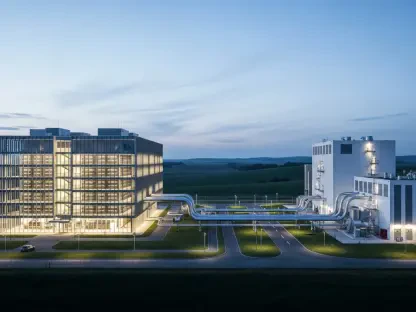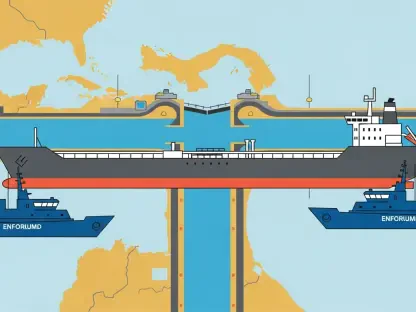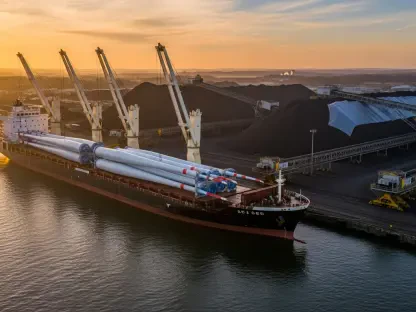Spain’s energy landscape stands at a critical juncture as the nation faces a decisive debate between its planned nuclear phase-out and potential extensions of reactor lifespans. The country’s comprehensive energy mix presently relies on a balanced combination of renewables, fossil fuels, and nuclear energy. Notably, nuclear power plays a significant role, providing a substantial portion of Spain’s electricity needs. The influence of industry leaders such as Iberdrola, Endesa, Naturgy, and EDP underscores the energy sector’s complexities. However, Spain’s current strategy aims to decommission all nuclear facilities by 2035, starting with the Almaraz plant in 2027. The conversation surrounding nuclear power’s relevance has been further ignited by recent power outages that have spotlighted the challenges of maintaining a stable energy supply.
Emerging Trends and Industry Dynamics
Recent years have witnessed technological advancements that could potentially redefine the nuclear sector. Innovations in reactor design and efficiency improvements have opened new avenues for extending the operational life of existing plants. Furthermore, shifts in consumer preferences toward stable and reliable energy sources have put nuclear power back into the spotlight. Economically, prolonging reactor lifespans may offer significant advantages, such as job preservation in local communities and sustained contributions to national energy independence. This shift has prompted discussions of new policy frameworks that might better accommodate these evolving dynamics.
Data-driven insights reveal that Spain’s current energy sector exhibits certain resilience markers across various performance metrics. Projections suggest varied growth trajectories depending on the presence or absence of nuclear energy in Spain’s future. A complete phase-out of nuclear power may potentially disrupt supply stability, while extending reactor lifespans could cushion such impacts. Moreover, scenarios looking forward include considerations of economic impacts, energy reliability, and environmental responsibilities, all crucial to national strategy discussions.
Challenges in Extending Nuclear Lifespans
Despite potential benefits, extending the lifespans of nuclear reactors presents several challenges. Technologically, aging infrastructure poses questions about safety upgrades and regulatory compliance. Policies governing nuclear energy extension must navigate a labyrinth of safety standards and environmental considerations. The competitive landscape is another hurdle, with renewables offering a clean alternative that is rapidly gaining market share. Proposed strategies to address these obstacles include investing in research to update reactor technology and developing new regulatory frameworks that reconcile safety with economic needs.
Regulatory Landscape and Compliance
The regulatory environment governing Spain’s nuclear sector involves strict national guidelines and European Union directives aligning with climate objectives. Prime Minister Pedro Sanchez has outlined critical conditions for any discussions on extending nuclear operations, focusing on the security of energy supply and ensuring costs remain manageable for citizens. Compliance with rigorous safety standards is non-negotiable, echoing EU priorities on sustainable energy development. These regulations and conditions frame the potential conversations around extending the operating periods of nuclear reactors in a structured and controlled manner.
Prospects for Spain’s Energy Sector
A strategic reassessment of nuclear reactor lifespans is poised to influence Spain’s broader energy trajectory. Extending nuclear operations could provide stability as the nation transitions toward greater renewable integration. Remarkable advancements in emerging technologies, such as advanced nuclear reactors and smart grid systems, highlight the sector’s transformative potential. Consumer preferences, increasingly favoring cleaner and more reliable energy sources, will play a pivotal role in shaping policy and investment priorities. The future of Spain’s energy sector will likely hinge on effectively integrating innovation and economic considerations to meet energy demands sustainably and reliably.
Conclusion and Recommendations
The debate over extending nuclear reactor lifespans in Spain reflects a complex interplay of economic, environmental, and social factors. Ultimately, decisions in this area must balance the imperative of reliable energy supply with fiscal prudence and climate goals. As the situation evolves, stakeholders are encouraged to engage in transparent dialogue and innovative collaboration. Policymakers should remain open to reassessing existing plans in light of technological advancements and market dynamics. Investing in research and ensuring alignment with international safety standards will be crucial. Ensuring a stable and sustainable energy future for Spain involves strategically navigating these multifaceted challenges and opportunities.









